Characteristics of peripheral immune response induced by large-vessel occlusion in patients with acute ischemic stroke
- PMID: 39719974
- PMCID: PMC11666556
- DOI: 10.3389/fneur.2024.1512720
Characteristics of peripheral immune response induced by large-vessel occlusion in patients with acute ischemic stroke
Abstract
Introduction: Despite improvements in the treatment of acute ischemic stroke (AIS), some patients still suffer from functional impairments, indicating the poor understanding of pathophysiologic process of AIS. Inflammation plays an important role in the pathophysiology of AIS. The purpose of the study was to investigate the peripheral inflammation in different subtypes of AIS.
Methods: Here, retrospective data from AIS with large vessel occlusion (LVO) and small vessel occlusion (SVO), and healthy controls, were initially analyzed. Then, flow cytometry was performed to evaluate the levels of peripheral naïve and memory T-cells. Finally, we characterized the T cell receptors (TCR) repertoire using high-throughput sequencing.
Results: Elevated levels of leukocytes, neutrophils, and neutrophil-to-lymphocyte ratio (NLR), and decreased levels of lymphocytes were found in LVO group than that in SVO group, which were correlated with the severity of LVO. In addition, higher percentages of both effector memory (Tem) and central memory (Tcm) T cells, and lower percentage of naïve T cells in CD4+ and CD8+ T cells, were found in LVO group than that in SVO and healthy groups. Moreover, impaired TCR diversity, and different abundances of V-J gene combinations and amino acid sequences, were found in LVO as compared with healthy group, which would be potential biomarkers for LVO diagnosis.
Discussion: In conclusion, AIS with LVO can rapidly induce peripheral immune response, which provides new insight into the understanding of pathophysiology of AIS.
Keywords: CD45; T cell; T cell receptors repertoire; acute ischemic stroke; large vessel occlusion.
Copyright © 2024 Ma, Sun, Fan, Xiao, Geng, Liu, Jiang, Jiang and Liu.
Conflict of interest statement
The authors declare that the research was conducted in the absence of any commercial or financial relationships that could be construed as a potential conflict of interest.
Figures
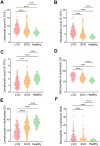
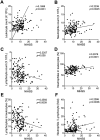
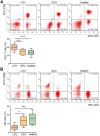
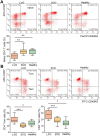

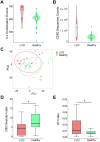
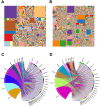


Similar articles
-
Leukocyte counts and ratios as potential predictors of large vessel occlusion in acute ischemic stroke: A retrospective cohort study.Medicine (Baltimore). 2024 Apr 19;103(16):e37904. doi: 10.1097/MD.0000000000037904. Medicine (Baltimore). 2024. PMID: 38640307 Free PMC article.
-
Relationship between leukocyte counts and large vessel occlusion in acute ischemic stroke.BMC Neurol. 2020 Dec 4;20(1):440. doi: 10.1186/s12883-020-02017-3. BMC Neurol. 2020. PMID: 33272235 Free PMC article.
-
The Importance of Increased Serum GFAP and UCH-L1 Levels in Distinguishing Large Vessel from Small Vessel Occlusion in Acute Ischemic Stroke.Biomedicines. 2024 Mar 7;12(3):608. doi: 10.3390/biomedicines12030608. Biomedicines. 2024. PMID: 38540221 Free PMC article.
-
Effect of definition and methods on estimates of prevalence of large vessel occlusion in acute ischemic stroke: a systematic review and meta-analysis.J Neurointerv Surg. 2020 Mar;12(3):260-265. doi: 10.1136/neurintsurg-2019-015172. Epub 2019 Aug 23. J Neurointerv Surg. 2020. PMID: 31444289
-
Does radiological conjugate eye deviation sign play a role in acute stroke imaging? A meta-analysis.J Neurol. 2022 Mar;269(3):1142-1153. doi: 10.1007/s00415-021-10540-7. Epub 2021 Apr 11. J Neurol. 2022. PMID: 33839904 Review.
References
-
- Adams HP, Jr, Bendixen BH, Kappelle LJ, Biller J, Love BB, Gordon DL, et al. . Classification of subtype of acute ischemic stroke. Definitions for use in a multicenter clinical trial. TOAST. Trial of org 10172 in acute stroke treatment. Stroke. (1993) 24:35–41. doi: 10.1161/01.STR.24.1.35, PMID: - DOI - PubMed
LinkOut - more resources
Full Text Sources
Research Materials
Miscellaneous

